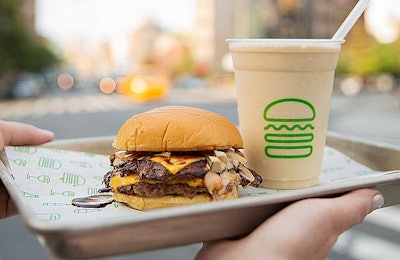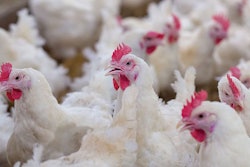
During the previous three years, the Chain Reaction report on antibiotic use in the supply chain for the top U.S. restaurant chains has graded those chains on their antibiotic use in all species of meat animals, including chicken, turkeys, pigs and beef cattle.
In those reports, the gist of it was chains that sourced meat and poultry raised with no antibiotics ever (NAE) got the highest grades. Those who phased out antibiotics also used in human medicine, or those who were making a transition to limit its antibiotic use got lower, but still passing grades.
Those who had not made any antibiotics-related policies got a big, fat F.
The scale is pretty much the same in the 2018 Chain Reaction report, with one exception: Instead of targeting the nation’s top 25 restaurants, the nation’s top 25 restaurants with hamburgers as their main attraction were graded.
So that means gone from the grade card are quick service restaurants that specialize in chicken such as KFC, Chick-fil-A and Buffalo Wild Wings, as well as casual dining restaurants like Applebees, Chipotle, Olive Garden and IHOP.
Making new appearances are chains like Five Guys, Whataburger, Krystal, Shake Shack and Culver’s.
Why beef and not poultry?
Initially, I wondered why there was this change of focus in the report. But then I saw a previous blog from Lena Brook on the Natural Resources Defense Council (NRDC) website. NRDC is one of the partners in the Chain Reaction study.
In her blog, Brook praised Yum! Brands restaurants KFC, Pizza Hut and Taco Bell for announcing commitments to reduce antibiotic use in their broiler supplies. She also gave credit, albeit indirectly, to the poultry industry for making a no antibiotics ever supply more attainable, while criticizing the beef and pork industries for not following the poultry sector’s lead.
How the restaurants fared
Only two restaurants received A grades: Shake Shack and BurgerFi.
The only other chain to get a passing grade was Wendy’s, and that was barely a passing grade at a D-.
Incidentally, last year when the report looked at the entire meat supply – including the poultry supply – sourced by top restaurant chains, Wendy’s was given a C grade.
Other chains named in the 2017 Chain Reaction report saw their grades drop when poultry was taken out of the equation. McDonald’s got a C+ in 2017, while Burger King and Jack in the Box got Ds. All three received failing grades in 2018.
Also getting F grades in 2018 were Sonic, Hardee’s, Whataburger, Carl’s Jr., Five Guys, Culver’s, Steak n Shake, In-N-Out Burger, White Castle, Checkers, Krystal, Smashburger, Freddy’s, The Habit, Rally’s, Fuddruckers, A&W, Jack’s and FarmerBoys. Of those, Sonic was the only chain rated in 2017.
What does this mean to poultry industry?
Regardless of your opinion about antibiotic use, the focus on the beef industry in this report can be seen as a good thing if you are involved in the poultry industry.
Clearly, there are people who choose to eat meat from animals raised without antibiotics. The fact that NAE chicken is more readily available than NAE beef means those consumers will likely be more apt to eat chicken than beef, or even pork for that matter.
It also shows that the poultry industry is a leader in the effort to reduce antibiotic use while concerns persist about antimicrobial resistance and its potential links to antibiotic use in animal agriculture.
So it would make sense that many consumers with those concerns, in their next trip to Wendy’s, McDonald’s or Burger King will look at chicken products on the menu more so than beef.


















